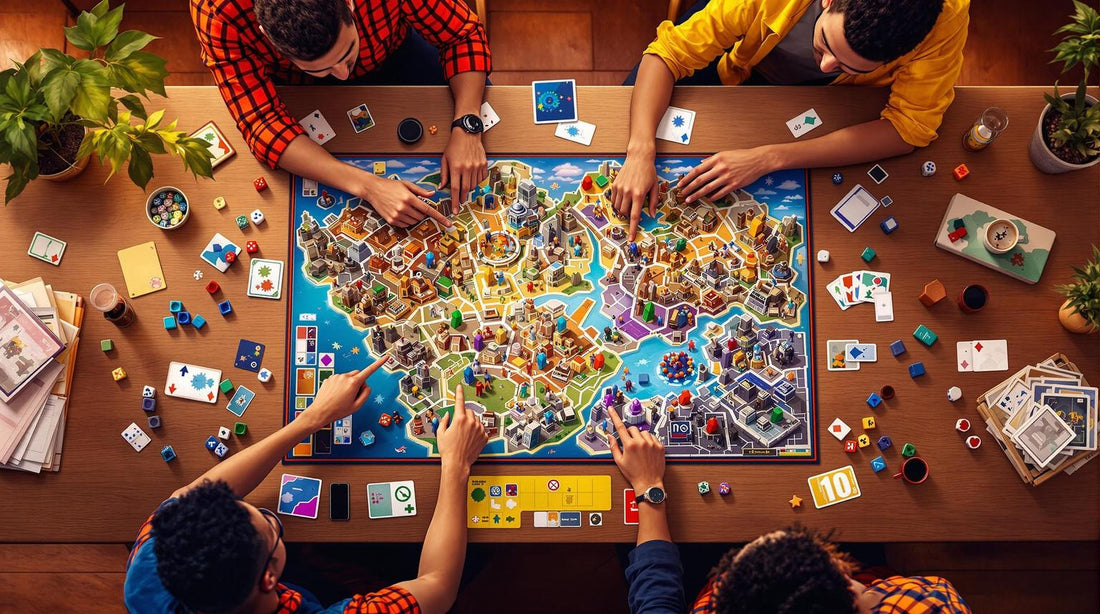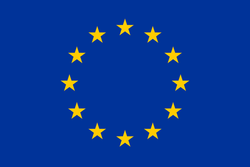Discover the Best Board Games for Every Player

Ultimate Guide to Research Station Placement in Pandemic
Research stations in Pandemic are essential for curing diseases and managing outbreaks. Placing them strategically can improve your team's ability to travel, collaborate, and respond to emergencies. Here's what you need to know:
-
Why Research Stations Matter:
- Cure Discovery: Develop cures using city cards at any station.
- Fast Travel: Move quickly between stations to save actions.
- Team Collaboration: Exchange cards and plan more efficiently.
- Outbreak Management: Reach hotspots faster.
-
Best Practices:
- Accessible Locations: Cover the board to minimize travel time.
- Hotspot Proximity: Place near high-risk areas to manage outbreaks.
- Key Cities: Focus on hubs like Hong Kong, Istanbul, or São Paulo.
- Adapt to Roles: Use abilities like the Operations Expert to optimize placement.
-
Common Mistakes:
- Too Many Stations: Waste of actions and resources; aim for 4-5 stations.
- Poor Spacing: Avoid clustering or leaving large gaps.
- Rigid Plans: Stay flexible and adjust placement as the game evolves.
Quick Tip: Balance immediate needs with long-term coverage to keep your team mobile and ready for new threats.
This guide will help you master station placement and improve your chances of winning.
Optimal Research Station Placement
Research Station Basics
Building on the strategic overview, this section explains how research stations work and why they matter in the game.
Purpose and Functions
Research stations serve as key hubs in the game, helping players discover cures and move quickly between locations.
They are essential for:
- Cure discovery: Use matching city cards to develop cures.
- Fast travel: Move directly between stations.
- Team collaboration: Facilitate card exchanges and planning.
- Outbreak management: Quickly respond to emergencies.
Building Requirements
The game begins with a research station in Atlanta, and players can have up to six in total. To build one, a player must be in the desired city and either discard its city card or use the Operations Expert's ability. If all six stations are already on the board, one must be moved to construct a new one.
Main Advantages
Research stations offer several benefits that can greatly influence your strategy:
| Advantage | Description | Strategic Impact |
|---|---|---|
| Cure Discovery | Players can develop cures at any research station | Key to achieving the game’s main objective |
| Fast Travel | Direct movement between stations | Saves actions and speeds up gameplay |
| Team Collaboration | Convenient meeting points for card exchanges | Makes sharing resources more efficient |
| Outbreak Management | Quick access to distant areas | Helps contain and control disease outbreaks |
Placing research stations wisely can make all the difference in keeping your team coordinated and achieving victory.
Best Placement Practices
Placing research stations strategically in Pandemic can make or break your efforts to control outbreaks. A well-planned network ensures quick movement and better outbreak management.
Location Access
When deciding where to place research stations, aim for locations that cover the board effectively and minimize travel time. Your goal is to create a network that allows your team to move easily and respond quickly.
Here are some placement tips:
- Hub Cities: Opt for cities that serve as major connectors, like Hong Kong, Istanbul, or São Paulo.
- Population Centers: Focus on cities with many connections, such as Madrid or Delhi.
- Cross-Regional Connectors: Choose cities that link different regions, like Cairo.
This setup helps your team move efficiently and manage outbreaks, especially in high-risk areas. A strong network can make a big difference when responding to emergencies.
High-Risk Areas
Beyond general accessibility, think about placing stations close to outbreak hotspots. This allows for faster containment while keeping the board covered.
| Region Type | Priority | Response Impact |
|---|---|---|
| Disease Clusters | Highest | Quick action against multiple outbreaks |
| Border Cities | High | Links multiple regions |
| Isolated Areas | Moderate | Stops outbreaks from spreading further |
Positioning near high-risk zones ensures you're ready to act when threats arise.
Character-Based Placement
Your team's abilities can also influence where you place research stations. Tailor your strategy based on the roles you're using:
- Operations Expert: Build stations without needing city cards, allowing you to set up regional networks early in the game.
- Scientist: Focus on cities where cure cards tend to cluster, speeding up the curing process.
- Dispatcher: Use a hub-and-spoke arrangement to improve player movement and maintain strong connectivity.
Adjust your station placements as the game progresses and new threats emerge. A flexible approach ensures you're always one step ahead.
sbb-itb-1ed942f
Expert Placement Methods
Taking station placement to the next level, these strategies are aimed at seasoned players looking to fine-tune their network for more effective gameplay. These tips go beyond the basics, helping you create a setup that supports dynamic and strategic moves.
Travel Network Design
Set up your travel network to cut down on both travel time and the number of actions needed. Place stations in key areas to make movement across the board as smooth and efficient as possible.
World Region Coverage
Make sure every major region has at least one station to prevent isolation and allow for quick responses to outbreaks. A well-distributed network keeps your team ready to manage disease control no matter where trouble arises.
Mid-Game Adjustments
As the game progresses and disease patterns change, revisit your station placements. Strengthen coverage in regions that become high-risk to stay ahead of emerging threats. Flexibility is key to maintaining control.
Placement Mistakes
Even seasoned players can fall into traps when setting up research stations in Pandemic. Recognizing these mistakes can help you keep your station network efficient and your team mobile.
Too Many Stations
Building too many research stations can drain your resources and actions. Remember, the game only allows 6 stations, and every extra one comes at a cost:
- Consumes 1 action per station built
- Uses a city card, which could be critical elsewhere
- Requires relocation later, adding more complexity
A smarter strategy is to aim for 4-5 well-placed stations, leaving 1-2 slots open for tactical moves as the game progresses.
Poor Station Placement
Bad station spacing can slow down your team and leave key areas vulnerable. Here are common spacing mistakes and how to fix them:
| Mistake | Problem | Fix |
|---|---|---|
| Stations clustered too closely | Limits coverage across the board | Keep at least 2-3 cities between stations |
| Large gaps in coverage | Makes some regions harder to reach | Ensure all major areas are within 2 moves of a station |
| Ignoring key routes | Reduces travel efficiency | Place stations at intersections of major travel paths |
Strategic spacing ensures your team can respond quickly and efficiently to outbreaks.
Sticking to a Rigid Plan
A fixed station layout can backfire as the game evolves. Outbreaks, epidemics, and shifting player positions all demand flexibility. Sticking rigidly to an initial plan can lead to:
- Slower responses to new threats
- Wasted movement actions
- Missed chances to improve your station network
Stay flexible. Be ready to relocate stations when the situation changes. The Operations Expert can build stations without discarding city cards, making them a key asset for adjusting your network. Keeping your setup dynamic is crucial for managing outbreaks effectively.
Conclusion
Placing research stations effectively in Pandemic can make or break your game. Controlling outbreaks and achieving your objectives often comes down to mastering this key element.
Winning requires finding the right balance between immediate needs and long-term planning. Build a network that not only addresses current threats but also provides the coverage you need for future challenges. Make sure to take advantage of your team’s special abilities while staying ready to tackle unexpected situations.
Keep reassessing your research station placement as the game evolves. This constant evaluation ensures you can respond quickly to changes while staying ahead of potential outbreaks.
For an even better experience, check out the full Pandemic collection at Brain Games. Expanding your resources can take your gameplay to the next level.
The top players in Pandemic excel by adjusting their research station strategy as the game unfolds. Combining this adaptability with strong positioning is the key to consistent success.






